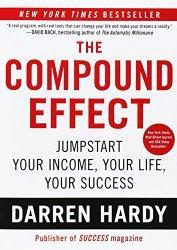
So you’ve decided to take the plunge and buy your first individual stock. Now what? In order to place a stock order, it is important to learn the lingo of stocks trades. This allows you to communicate clearly with your broker to avoid misunderstandings. If you’re buying online, knowing what the different orders are and which ones to uses is equally important. Learn these terms and you’ll be sounding like a pro in no time.
Here are the types of orders for buying or selling stocks and other securities, plus some other ordering terminology, that every investor should know:
Buy – An order to buy a security.
Sell – An order to sell a security.
Bid price: The highest price at which someone is willing to buy shares at a given time. For example, someone may be out there ready to buy 500 shares of XYZ corporation for $30.25 per share.
Ask price: The lowest price at which someone is willing to sell shares.
Market Order – An order to buy or sell a security at the current market price. Because at any given time the market price includes the Bid price (the price someone is willing to pay for a security) and the Ask price (the price at which someone is willing to sell), if you put in a market order to buy you will pay the ask price, and if you put in a market order to sell you will sell at the bid price. The difference between the Bid and the Ask is called the Spread. In actuality, professionals in the markets will buy shares from someone at the bid price and then sell it to others at the ask price, so they will get to keep the spread as profit.
Limit Order – An order in which a price is set as a threshold for the sale. For example, a buy order with a limit of $50 would execute when the Ask price of the stock was at $50 or lower.

A Beginner’s Guide to Investing: How to Grow Your Money the
Smart and Easy Way, only $6.99 at Amazon
Stop– An order to buy or sell a stock if it passes through a specific price.
All or None – An order which is executed only if all the shares can be bought or sold in one lump.
Good ‘Til Canceled (GTC) – An order that will stay open for a month after it is entered. Normal orders are only open for the trading day and must be reentered if not executed on that day.
So, if you wanted to buy 100 shares of XYZ corp, which was currently trading with a bid price of $50 and an ask price of $50.25, and you wanted to pay mno more than $50.50 per share, you would tell your broker:
“Buy 100 shares of XYZ corp with a limit of $50.50.”
Because the ask price was below your limit, assuming there were 100 shares available at that ask price and there were no one else in front of you, you would end up buying 100 shares at $50.25 since that was below your limit price. If there were only 50 shares available at that price and 50 more at $50.50, you would get fifty shares at each price.
The above terms can be combined. For example, one would say “Buy 100 shares of XYZ at the market” to buy 100 shares of XYZ corporation at the market price. One could say “Buy 100 XYZ, limit of $50 or better, GTC” to put out an order that would stay open for a month in which 100 shares of XYZ corporation would be bought if the Ask price dropped to $50 or lower during that month.
Note that stop orders can be stop limit or stop market orders. If you place a stop limit order, it will create an order to sell (or buy) if the stock price reaches your limit with a minimum (maximum) of your limit price, where a stop market order will sell (or buy) at the market price if your limit is reached.

Try Anti-Monopoly, a twist on the classic game.
You may be thinking that this is all well and good, but which orders should I uese and when? Let’s now go into the strategies I use when selecting the type of order to use.
The investing strategy I use and that I promote with this blog is to invest for the long-term and make a lot of money with each successful trade. We’d like the stock to go up 1000% or more over the time period that we hold it. Because of the long time period involved, we are not that concerned with getting a few extra pennies per share on a trade. For this reason, I generally use a market order when buying. This will cause the order to be filled within the next few trades (we may need to wait a few trades if there are people ahead of us with market orders). On a stock that trades a lot, said to be “liquid,” market orders are generally fine and we won’t get a crazy price, which can happen in stocks that trade rarely and therefore are illiquid. There, a limit order is needed to prevent getting a bad price. Buying stocks at-the-market prevents us from missing a good buying opportunity and seeing the stock shoot up out of range be cause we’re waiting for the price to drop by a few cents. If you make $30,000 from a stock trade, it won’t matter much if you pay an extra $50 for the shares.

Get The Compound Effect for only $9.52
When I’m looking sell because I’ve made a good profit and I’m worried it may evaporate, I also find that it is best to use a market order and get out. I’ve had the experience before when a gain turned into a loss because I set a limit and it didn’t fill before the bottom dropped out. Again, it is usually best not to quibble over pennies.
If I’m in the process of accumulating shares and I feel that the stock has good long-term prospects but there is probably nothing to cause it to shoot up in the near-term, I may set a limit order and wait. I may also enter with a market order to get some shares, and then place a limit order a little lower to buy more shares if the price then dips. (Note with a limit order I also tend to use Good-Til-Canceled since it may take a few days to execute.) When setting a limit, I pick an odd amount (for example, $20.16 per share or better) because there will generally be other people with limit orders in and people tend to like round numbers. With a limit order, the first in line at the price gets the shares. If the stock is thinly traded, or illiquid, I will never place anything but a limit order. This is because if there are only a few buyers or sellers, the price may easily change by 10% or more between trades. Looking at the typical spread for the stock (difference between the bid and the ask price) and the volume is a good way to tell if the stock is illiquid. I also always use a limit order when selling stocks short or covering a short position, generally setting the limit slightly above the ask price in the latter case to make sure it executes rapidly, but giving me protection fram radical price movements.
Stop orders, often called “stop loss” orders, are sometimes recommended as a way to limit losses. For example, you buy 100 shares of xyz, and then set a stop loss order at $36 so that if the stock drops by 10% you’ll get out automatically. I generally don’t recommend stop loss orders for two reasons. The first is that the market will set all kinds of prices based on rumors, news, and just fluctuations driven by trading (the stock goes down a little so more people jump out, causing it to continue down). These fluctuations really mean nothing about the underlying business, and we don’t want to get out of a good company just because it becomes temporarily unpopular. The second reason is that various traders use stop loss orders to make profits and get shares at lower prices. A stock may move down temporarily, hit your stop causing you to sell your shares, and then shoot back up, leaving you behind.
One case where I may use a stop order is when a stock has gone up a lot and I’m looking to take some of the money off of the table and move it somewhere else (the stock has gone up enough that I don’t want to risk the loss). In that case I may set a stop loss a few dollars below the current price, and then move the stop up if the stock rises until it eventually hits. This is nice psychologically since you don’t feel like you’re selling a stock that is a winner and will climb higher, but in general I’ve found I end up just losing a couple of dollars when my stop gets hit and I should have just put in a market order and sold the shares.
As said above, there is what is called a stop market and a stop limit. A stop market will sell the shares at the market price if the stop price is reached. The stop limit will put in a limit order at the stop price if the stop is reached. Never use a stop limit because if the stock falls below your limit price, the order will not be executed and you will still own the shares.
Finally, I may use an all-or-none order for a thinly traded stock to avoid getting a few shares and having to pay minimum commissions on more than one trade.
So there you have it. Time to buy some shares.
To ask a question, email [email protected] or leave the question in a comment.
Follow on Twitter to get news about new articles. @SmallIvy_SI
Disclaimer: This blog is not meant to give financial planning advice, it gives information on a specific investment strategy and picking stocks. It is not a solicitation to buy or sell stocks or any security. Financial planning advice should be sought from a certified financial planner, which the author is not. All investments involve risk and the reader as urged to consider risks carefully and seek the advice of experts if needed before investing.
Advertisements